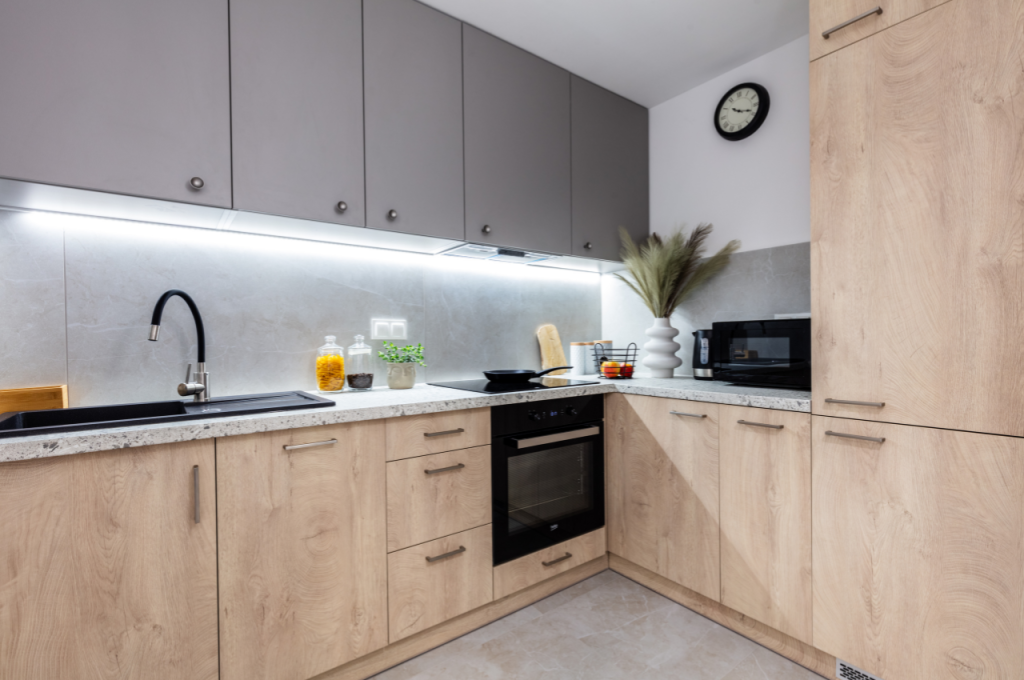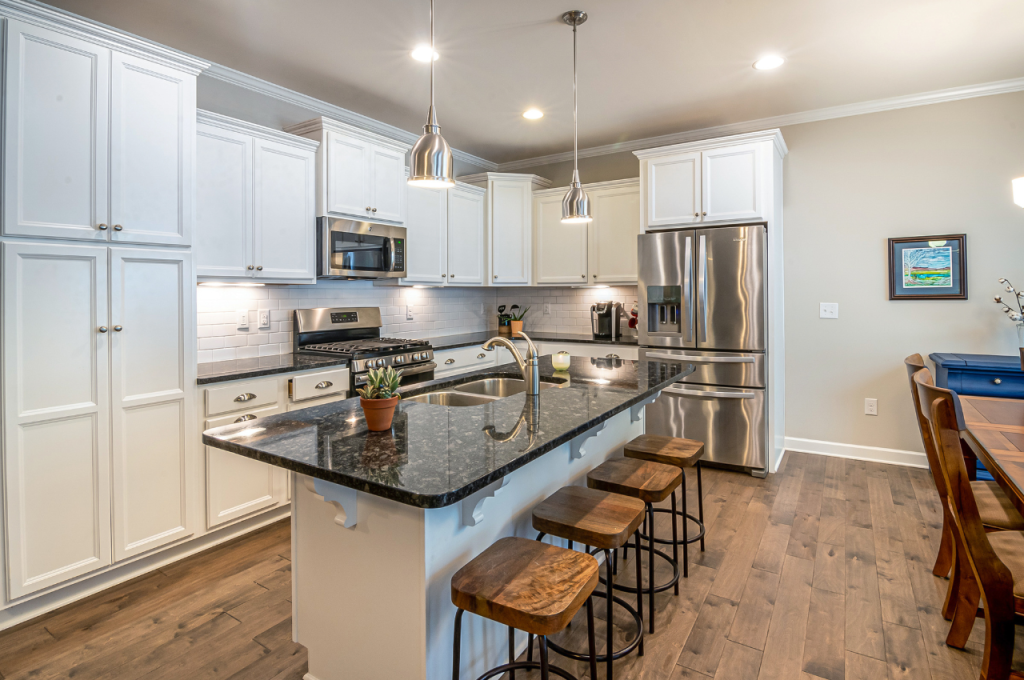When designing a kitchen, opt for a simple layout with functional storage solutions. Emphasize minimalism and practicality.
Creating a simple kitchen design involves focusing on clean lines, maximizing storage space, and choosing neutral colors. By decluttering countertops, using efficient organization systems, and incorporating high-quality materials, you can achieve a timeless and elegant aesthetic in your kitchen. Implementing strategic lighting and adding personal touches can further enhance the functionality and overall appeal of the space.
Simplicity in design not only creates a visually pleasing environment but also promotes efficiency and ease of use in daily tasks. Start with a streamlined approach and carefully select elements that contribute to a clean and inviting kitchen space.
Maximizing Space
Maximizing Space: When designing a kitchen, making the most of the available space is crucial. Utilizing smart solutions can help create a functional and visually appealing kitchen environment.

Open Shelving
Open Shelving: Installing open shelves can instantly create an illusion of more space. It provides easy access to items while making the kitchen feel airy and open.
Multi-functional Furniture
Multi-functional Furniture: Opting for furniture that serves multiple purposes, such as a kitchen island with built-in storage or a foldable dining table, helps maximize space utilization in a small kitchen.
Minimalist Color Palette
Embarking on a kitchen redesign with a minimalist color palette can create a sleek, modern space that exudes a sense of calm and simplicity. Focusing on neutral tones and a monochromatic scheme can enhance the minimalist aesthetic further.
Neutral Tones
Neutral tones like whites, grays, beiges, and taupes form the foundation of a minimalist color palette in the kitchen. These hues help to create a clean and uncluttered look, allowing other elements in the space to stand out. Soft whites and light grays can make the kitchen feel bright and open.
Monochromatic Scheme
Adopting a unicoloured scheme, such as using varying shades of a single color, adds depth and complicated to a minimalist kitchen. For instance, pairing different tones of gray can achieve a harmonious and cohesive look while still keeping the space simple and elegant.
Strategic Lighting
Kitchens are not just about preparing meals—they are also the heart of the home, where families gather, and conversations flow. The strategic lighting in a kitchen can enhance its functionality and aesthetics, creating an inviting ambiance. From harnessing natural light to utilizing under-cabinet LED lights, the right illumination can transform a kitchen’s design.
Natural Light Emphasis
The beauty of natural light cannot be overstated. It not only reduces energy consumption but also imparts a refreshing glow to the kitchen space. Consider positioning the kitchen in a way that maximizes exposure to natural light, such as near a window or a skylight. Skylights can be a great addition to infuse the kitchen with an abundance of invigorating daylight, creating a welcoming and lively environment.
Under-cabinet Led Lights
Under-cabinet LED lights are a game-changer in kitchen design. They not only enhance the aesthetics of the kitchen by creating a striking visual effect but also provide practical illumination for food preparation and cooking tasks. These lights can be strategically placed to illuminate work surfaces, eliminating shadows and making kitchen activities more efficient and safe.
Functional Layout
A functional layout in a kitchen is crucial for efficient workflow and ease of movement. The concept of the work triangle, which consists of the stove, sink, and refrigerator, is a key element in creating a practical and efficient kitchen design.

By positioning these three essential elements near each other, you can minimize the steps required to perform cooking and cleaning tasks. This triangular arrangement not only saves time but also promotes a seamless flow within the kitchen.
When planning your kitchen’s layout, consider the following tips to optimize the efficiency of the work triangle:
- Ensure that the total distance between the three points of the triangle is no less than 12 feet and no more than 26 feet.
- Avoid any obstacles, such as kitchen islands or bulky appliances, that may disrupt the flow between the work triangle.
- Keep the work triangle-free from foot traffic by positioning it away from major thoroughfares.
By creating a well-defined and efficient work triangle, you can transform your kitchen into a highly functional space that allows for easy navigation and streamlined meal preparation.
Storage optimization is another crucial aspect to consider when designing a functional kitchen layout. Efficient storage solutions not only help you keep your kitchen organized but also maximize the available space.
Here are some tips to optimize storage in your kitchen:
- Utilize vertical space by installing tall cabinets or open shelves that extend to the ceiling.
- Incorporate pull-out drawers and shelves in your base cabinets for easy access and better organization.
- Consider installing a pantry cabinet or creating a designated pantry area to store bulk items and non-perishable foods.
- Make use of corner spaces with rotating or pull-out storage solutions to maximize the available space.
Additionally, you can enhance storage optimization by decluttering your kitchen regularly and only keeping items that are necessary and functional. By efficiently utilizing your kitchen’s storage space, you can create a tidy and organized environment that supports an efficient workflow.
Incorporating Natural Elements
When it comes to kitchen design, incorporating natural elements can create a warm and inviting space. By bringing the beauty of the outdoors inside, you can create a kitchen that feels fresh, organic, and connected to nature. Natural elements can be incorporated into your kitchen design in various ways, whether it’s through wood accents, indoor plants, or both. In this section, we will explore how these elements can add a touch of natural beauty to your kitchen.
Wood Accents
One way to incorporate natural elements into your kitchen design is by adding wood accents. Wood brings a sense of warmth and character to any space, creating an inviting atmosphere. There are various ways you can incorporate wood accents into your kitchen:

- Install wooden cabinets or shelves to add a natural touch to your kitchen storage area. The grain and texture of the wood will enhance the overall aesthetic.
- Consider using a wooden countertop or butcher block for your kitchen island or workspace. This not only adds natural beauty but also provides a durable and functional surface.
- Use wooden bar stools or chairs to create a cozy seating area. The natural tones and textures of the wood will complement the overall design of your kitchen.
Indoor Plants
Indoor plants are another great way to incorporate natural elements into your kitchen design. Not only do they add a pop of color and texture, but they also improve air quality and create a calming environment. Here are a few ideas for incorporating indoor plants in your kitchen:
- Place small potted plants on your windowsill or floating shelves to bring the beauty of nature inside.
- Hang macrame plant hangers from the ceiling or walls to create a vertical garden effect.
- Consider larger floor plants like a fiddle leaf fig or a Monstera deliciosa to add a statement piece to your kitchen.
Remember to choose plants that thrive in indoor environments and can withstand the conditions of your kitchen. It’s important to consider the amount of natural light and humidity in the space, as different plants have different needs.
Conclusion
In creating a simple kitchen design, prioritize functionality, organization, and aesthetics for a harmonious space. By focusing on streamlined elements and minimal clutter, you can achieve a modern and inviting kitchen. Remember to utilize clever storage solutions to maximize space and keep the design practical yet stylish.
Incorporating these principles will result in a sleek and efficient kitchen that enhances your daily living experience.

